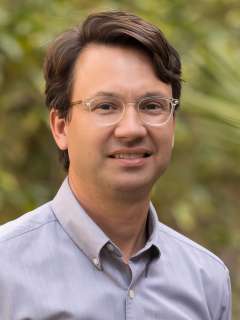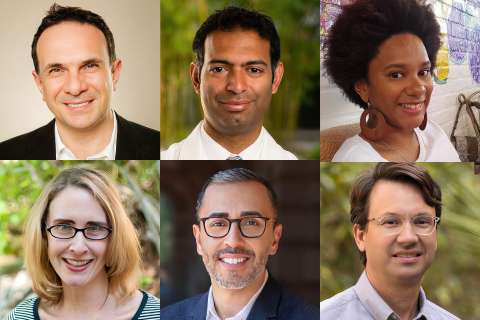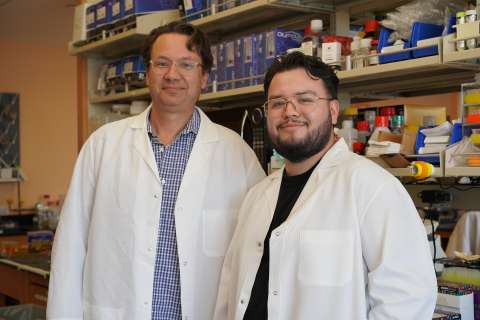
William Lowry, PhD
Languages
Contact Information
Phone
Scientific Interests
Adult stem cells are set aside during development in order to provide a source for replenishment of tissue over time in response to damage or simple wear and tear. The literature suggests that stem cells can be found in most major organ systems, and that they possess defining characteristics, namely the ability to both self-renew and differentiate down one or more specific lineages. Many groups have sought to define stem cell specific physiology in a molecular fashion by identifying those genes specifically expressed in stem cells. These data suggest that there are genes frequently found to be upregulated in stem cells from various tissues, but these data do not definitively demonstrate that these cells all function similarly. There is also considerable data showing that various signaling pathways influence stem cell growth and differentiation.
A review of this literature suggests that many well-described pathways affect adult mammalian stem cells from different tissues similarly, and that these effects are sometimes unique to stem cells as opposed to their progeny. Dr. William Lowry's lab investigates whether stem cells found in different tissues utilize similar mechanisms to undergo self-renewal and differentiation. Only by understanding self-renewal and differentiation can researchers hope to make inroads into the "cancer stem cell" hypothesis and potentially take advantage of their inherent plasticity. To explore whether similar mechanisms are employed by stem cells during both adult tissue homeostasis and embryonic development, Lowry's lab is also working to understand how the earliest steps of lineage restriction/decision are made in the embryo where ectodermal cells become either neuronal or epidermal. Someday, Lowry hopes to put the knowledge gained by studying adult stem cells to clinical use.
Highlighted Publications
Patterson M, Chan DN, Ha I, Case D, Cui Y, Handel BV, Mikkola HK, Lowry WE, Van Handel B. Defining the nature of human pluripotent stem cell progeny. Cell Res. 2012 Jan;22(1):178-93. Epub 2011 Aug 16
White AC, Tran K, Khuu J, Dang C, Cui Y, Binder SW, Lowry WE. Defining the origins of Ras/p53-mediated squamous cell carcinoma. Proc Natl Acad Sci U S A. 2011 May 3;108(18):7425-30. Epub 2011 Apr 18
Plath K, Lowry WE. Progress in understanding reprogramming to the induced pluripotent state. Nat Rev Genet. 2011 Apr;12(4):253-65.
Chin MH, Pellegrini M, Plath K, Lowry WE. Molecular analyses of human induced pluripotent stem cells and embryonic stem cells. Cell Stem Cell. 2010 Aug 6;7(2):263-9.
Chin MH, Mason MJ, Xie W, Volinia S, Singer M, Peterson C, Ambartsumyan G, Aimiuwu O, Richter L, Zhang J, Khvorostov I, Ott V, Grunstein M, Lavon N, Benvenisty N, Croce CM, Clark AT, Baxter T, Pyle AD, Teitell MA, Pelegrini M, Plath K, Lowry WE. Induced pluripotent stem cells and embryonic stem cells are distinguished by gene expression signatures. Cell Stem Cell. 2009 Jul 2;5(1):111-23.
In the News


